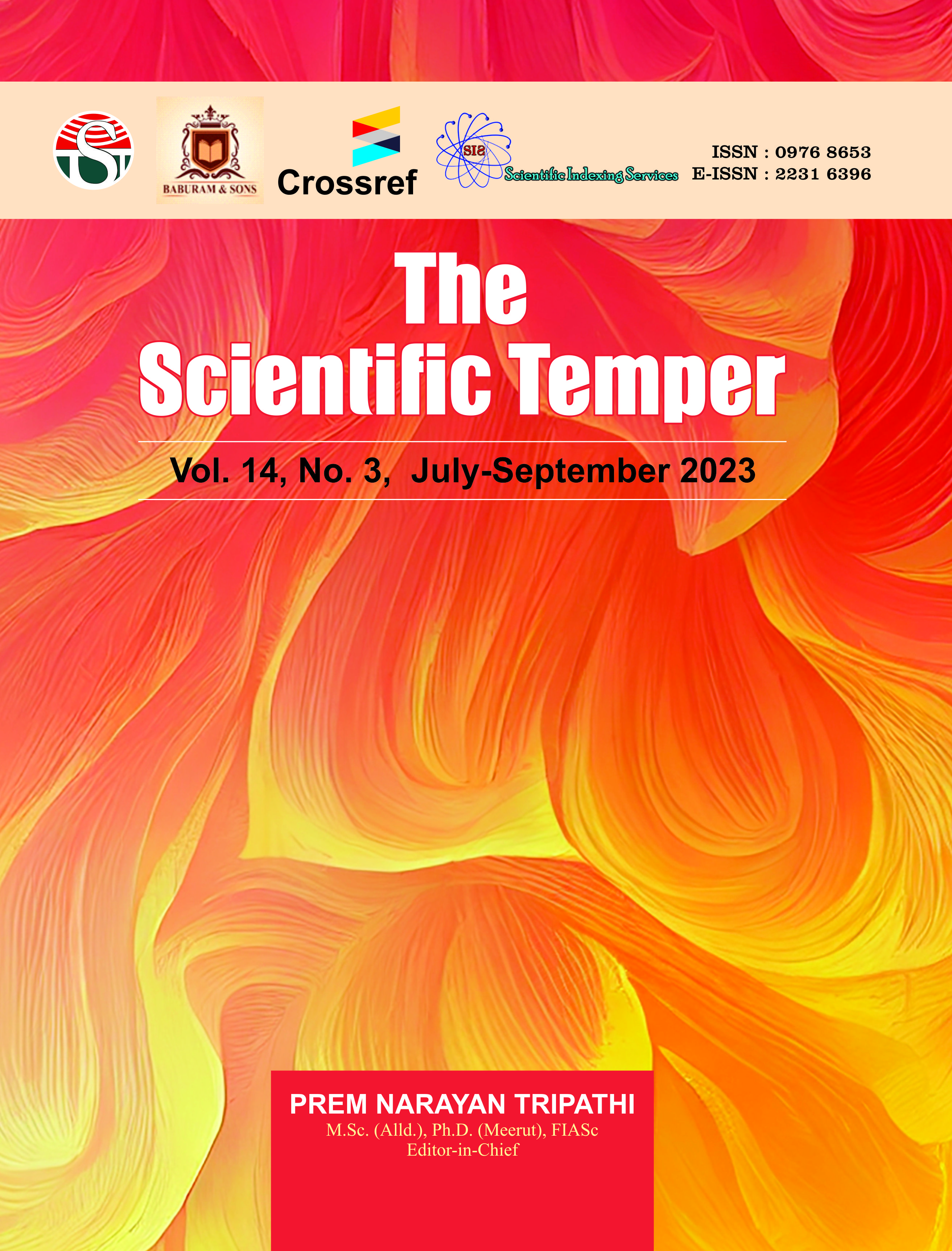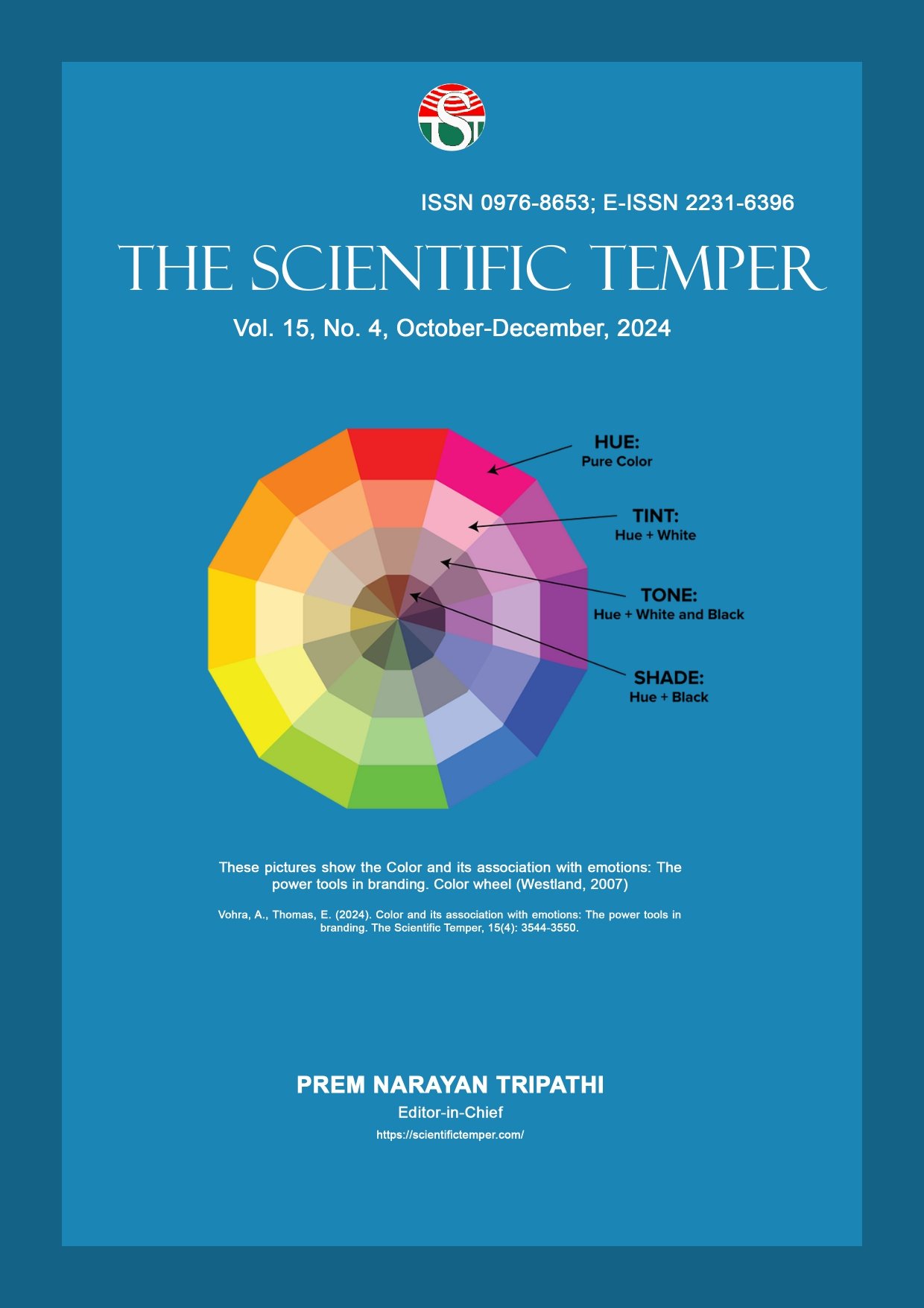A TLBO algorithm-based optimal sizing in a standalone hybrid renewable energy system
Downloads
Published
DOI:
https://doi.org/10.58414/SCIENTIFICTEMPER.2023.14.3.10Keywords:
Renewable Energy System, Hybrid System, TLBO algorithm, Standalone RES, PV SystemDimensions Badge
Issue
Section
License
Copyright (c) 2023 The Scientific Temper

This work is licensed under a Creative Commons Attribution-NonCommercial-ShareAlike 4.0 International License.
Depletion of fossil fuels, increase in fuel prices, and global warming have motivated the utilization of renewable energy resources like solar and wind, as they are eco-friendly. Due to the stochastic nature of PV and wind, using a single energy source is not reliable and uneconomical as it results in system over-sizing. Integration of renewable sources such as PV and wind can significantly increase energy reliability compared to single-source systems. PV and wind hybrid systems are economically advantageous in isolated areas for providing continuous and quality power due to their inherent complementary characteristics and availability in most areas. Utilizing grid-tied renewable energy resources is also economical and reliable to overcome power outages in remote areas. This study proposes a TLBO algorithm for optimal design and sizing of HRES in both standalone and grid-connected modes due to its simplicity and fewer parameters to adjust. The objective of the optimization problem in standalone, as well as the grid-connected mode, is to minimize the LCE and maximize the system reliability and renewable energy integration while satisfying the system constraints and load demand. The number of PV panels, wind turbines, and batteries is taken as decision variables optimally determined by the proposed optimization algorithm. The simulations are carried out in MATLAB software. The effectiveness of TLBO in designing and sizing the hybrid system is investigated, and its performance is compared with other well-known optimization algorithms PSO; the TLBO provides the best optimal solution, better performance, and faster convergence speed compared to different algorithmsAbstract
How to Cite
Downloads
Similar Articles
- A.P. Asha Sapna, C. Anbalagan, Towards a better living environment-compressive strength and water absorption testing of mini compressed stabilized earth blocks and fired bricks , The Scientific Temper: Vol. 14 No. 04 (2023): The Scientific Temper
- Vandana, Ambrish Pandey, Comparative study of delta e of hybrid modulated and digitally modulated screening on different grades of paper , The Scientific Temper: Vol. 14 No. 03 (2023): The Scientific Temper
- K Sreenivasulu, Sameer Yadav, G Pushpalatha, R Sethumadhavan, Anup Ingle, Romala Vijaya, Investigating environmental sustainability applications using advanced monitoring systems , The Scientific Temper: Vol. 14 No. 04 (2023): The Scientific Temper
- Jonah, Danush Kumar SM, Yugeshkrishnan M, Santhoshkumar K, Shahid Gaffa, Satellite hardfacing of mild steel using robotic mig welding , The Scientific Temper: Vol. 14 No. 02 (2023): The Scientific Temper
- M. Rajalakshmi, V. Sulochana, Enhancing deep learning model performance in air quality classification through probabilistic hyperparameter tuning with tree-structured Parzen estimators , The Scientific Temper: Vol. 14 No. 04 (2023): The Scientific Temper
- Bajeesh Balakrishnan, Swetha A. Parivara, E-HRM: Learning approaches, applications and the role of artificial intelligence , The Scientific Temper: Vol. 14 No. 04 (2023): The Scientific Temper
- Rajeshwari D, C. Victoria Priscilla, An optimized real-time human detected keyframe extraction algorithm (HDKFE) based on faster R-CNN , The Scientific Temper: Vol. 15 No. 03 (2024): The Scientific Temper
- Mayuri Gupta, Deesha Khaire, Financial devolution in a multilevel system: An evaluation of the working of state finance commissions in India , The Scientific Temper: Vol. 15 No. 04 (2024): The Scientific Temper
- P. Rajkumar, B. Vijay Bhaskar, Assessing the impact of indoor air pollution on respiratory health: A survey of home residents in rural area , The Scientific Temper: Vol. 15 No. 03 (2024): The Scientific Temper
- Shripada Patil, Sandeep N. Jagdale, Prashant Kalshetti, Management education system in the 21st century: Challenges and opportunities , The Scientific Temper: Vol. 14 No. 04 (2023): The Scientific Temper
<< < 10 11 12 13 14 15 16 17 18 19 > >>
You may also start an advanced similarity search for this article.
Most read articles by the same author(s)
- Muthuvel Balasubramanian, Jonnakuti V. G. Rama Rao, Surya C. P. R. Sanaboina, Vavilala Venkatesh, Amalodbhavi Sanaboina, Tracking and control of power oscillation dampings in transmission lines using PV STATCOM , The Scientific Temper: Vol. 14 No. 03 (2023): The Scientific Temper



